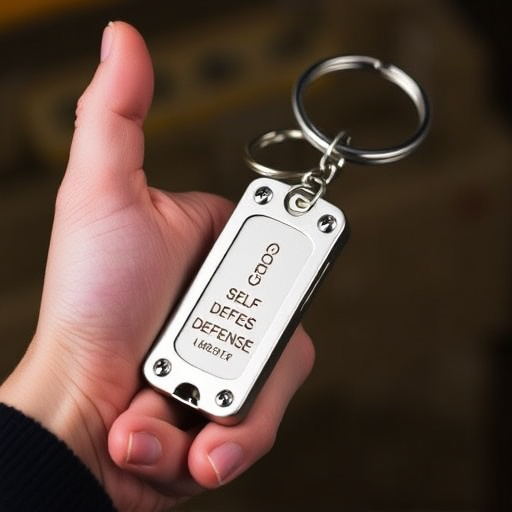Designing a metal defense keychain requires understanding non-lethal weapon regulations, focusing on safety features like locking mechanisms and clear labeling. Balancing durability, control, and discretion, using materials like high-quality rubber and metals like stainless steel or titanium ensures functionality and public trust in safe self-defense options. Compliance with local laws regarding non-lethal keychain weapons is crucial for effective deployment and reliability.
In today’s self-defense market, compact and creative solutions like metal defense keychains are gaining popularity. However, understanding legal limitations is crucial before considering such tools as non-lethal keychain weapons are subject to specific regulations. This article explores design tips for effective and safe keychain grips, focusing on materials and construction techniques, while adhering to the guidelines that make these devices legally acceptable, emphasizing the importance of non-lethal keychain weapons allowed by law.
- Understanding Legal Limitations: Non-Lethal Keychain Weapons Allowed
- Design Considerations for Effective and Safe Keychain Grip
- Materials and Construction Techniques for Optimal Performance
Understanding Legal Limitations: Non-Lethal Keychain Weapons Allowed
When designing a metal defense keychain, it’s crucial to understand the legal landscape surrounding non-lethal keychain weapons. Not all self-defense tools are created equal; some jurisdictions have strict regulations on what constitutes an acceptable self-defense device. In many places, non-lethal keychain weapons are allowed, provided they meet specific safety and design criteria. These criteria often include features like a limited range, reduced force output, and visible indicators to differentiate them from lethal weapons.
Designers should keep in mind that these non-lethal tools must be designed with caution to prevent accidental injuries or misuse. Incorporating safety mechanisms such as locking mechanisms, controlled release systems, and clear labeling can help ensure that users understand the limitations and intended use of the device. Adhering to local laws and regulations not only protects individuals carrying the keychain but also strengthens public trust in self-defense options that prioritize safety over harm.
Design Considerations for Effective and Safe Keychain Grip
When designing a keychain grip intended for self-defense, safety and functionality should be the top priorities. The key is to create a comfortable and secure grip that allows users to easily wield the device in stressful situations while minimizing the risk of injury to themselves or others. In light of the above, consider materials that offer a good balance between durability and give, such as high-quality rubber or composite materials, which can provide a non-slip grasp even when wet or under pressure. The design should also incorporate features like texturized surfaces or ergonomic contours to enhance grip strength and control.
Moreover, given that non-lethal keychain weapons are allowed in many public spaces, designers must ensure their creations comply with local regulations and do not pose a risk of causing severe harm. This might involve implementing safety mechanisms like automatic locking mechanisms or customizable force adjustments to prevent accidental deployment. Additionally, the overall size and weight of the keychain should be considered to ensure it can be easily carried without causing discomfort or drawing unnecessary attention.
Materials and Construction Techniques for Optimal Performance
When designing a metal defense keychain grip, selecting the right materials and construction techniques is paramount for optimal performance. Opting for high-quality stainless steel or titanium ensures durability and longevity, crucial factors in a non-lethal keychain weapon allowed for self-defense purposes. These metals are known for their resistance to corrosion and impact, making them ideal choices for such tactical accessories.
Advanced manufacturing processes like precision machining and laser cutting contribute to the overall effectiveness. Such techniques enable the creation of intricate grip patterns that enhance traction and control during use. This is particularly important as it ensures a secure hold, allowing users to deploy the keychain effectively in various situations. Remember, the right materials and construction can significantly impact the functionality and reliability of your self-defense tool.
When designing a metal defense keychain grip, it’s crucial to balance effectiveness with safety. In regions where non-lethal keychain weapons are allowed, understanding legal limitations is paramount. Incorporating thoughtful design considerations, such as ergonomic grips and reliable mechanisms, ensures both functionality and user safety. The choice of materials and construction techniques significantly impacts performance, making lightweight yet durable options ideal. By adhering to these guidelines, you can create a safe and effective self-defense tool that respects the law while empowering users with peace of mind.
